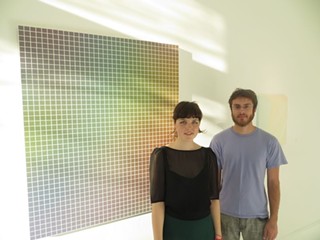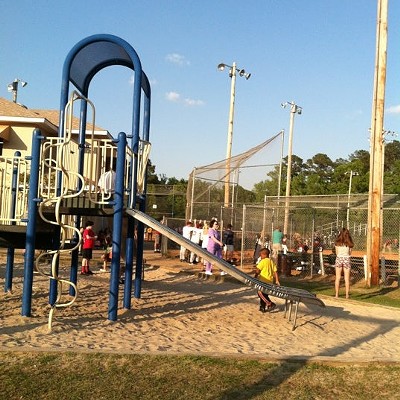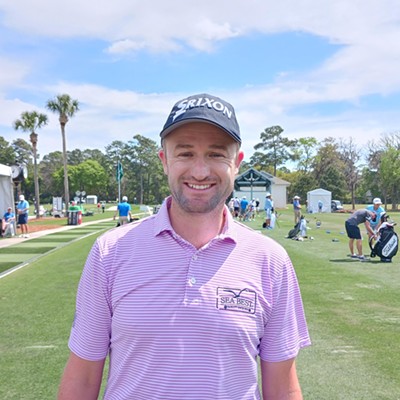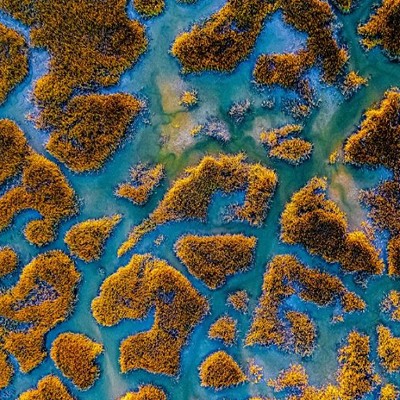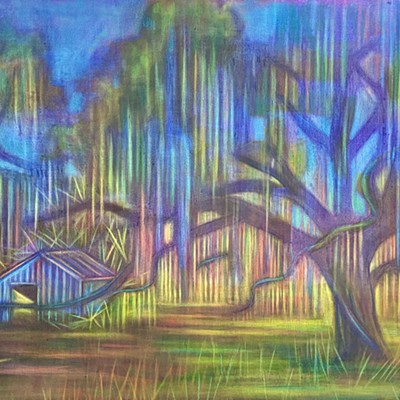This past April, Non-Fiction Gallery launched a brilliant exhibit investigating the fundamental structures of perception and embodiment.
Alessandra Hoshor, a SCAD painting student and gallery co-director, planned the show over the course of the last five months. She invited seven other local and international artists to produce work addressing the prompt "Ecstatic Matrices."
Along with Hoshor, Addison Adams (Athens, GA), Veronica Cabrera (San Juan, Puerto Rico), Karolina Glusiec (Lublin, Poland), Kyle Joseph (Miami, FL), Felix Kalmenson (Toronto, Ontario), Will Penny (Woodstock, Ontario) and Jane Winfield (Charleston, SC) addressed the topic through the mediums of conceptual animation, drawing, painting, and sculptural installation.
Hoshor found her fellow exhibiting artists and provided each with the definitions of "ecstatic," feeling or expressing overwhelming happiness or joyful excitement, and "matrix," a surrounding medium or structure. She said she hoped offering contributing artists only these definitions would encourage play and openness.
She certainly accomplished that goal and more; about a dozen works interrogated the functions and possibilities of the two-dimensional plane, the features spatial experience and the basic structures of our surrounding world. Joining so many diverse points of view centered on such a rich set of concepts, the collaborative project sought after preverbal, universal experiences that link us as perceiving human beings.
Each artist tested the rules and limits of their mediums. Addison Adams, a recent UGA grad, produced a stop-motion animation that played on loop and accompanied a pair of his paintings. The juxtaposition between the degrees of motion each medium was capable of conveying established one of the exhibit's central comparisons: a weighing of static material supports against explosive motion achieved primarily through pressuring the picture plane's conventions.
Hoshor's own contribution, "Gravity Work #2," literalized this tension. To execute her "expanded drawing," she used florescent utility rope to attach two cinder blocks to a small black panel hung on the gallery wall. A charming little fish bait atop one of the blocks signals viewers to have fun. The blocks' heaviness breaks the panel support and interrupts the conventions of the illusionistic plane. The thin ropes cause the eye to float back to the two-dimensional panel, in part reestablishing the broken link to the conventional picture plane.
Other works similar cue the viewer to establish a given space only to disrupt that orientation process. Jane Winfield offered a medium-scale painting that builds a dense topography out of color fields, each constructing its own spatial orientation. Sketchy, freehand shapes generate a conventional, two-point perspective, but the layers of competing planes disrupt that projection.
The exhibit's most impressive work was Veronica Cabrera's "Thought Tango." Filling a niche at the gallery's rear, the assemblage of foam, branches and ribbon painted with white house paint was a stunning contrast of natural and artificial materials. Executed specifically for that space, Cabrera's sculptural installation recalls DNA and other emergent forms and organic structures Nature has improvised to birth the visible and invisible features of experience. Its tendrils twisting, contorting and tangling about the viewer, "Thought Tango" is as exuberant as it is haunting, fulfilling its title's promises of drama and dynamism.
In complementary fashion, two selections from Toronto-based Felix Kalmenson's project "Growths" continued this contemplation of fundamental natural structures. Kalmenson's stunning compositions of euphoric color patterns are the result of months of breeding mold on 35mm motion picture film.
Rotting the found footage, Kalmenson produces otherworldly images that resemble Hubble Space Telescope deep-field photographs as much as they register the microscopic life that created them.
From our position between microcosm and macrocosm, we find ourselves uniquely able to consider the universal structures that the very large and very small share.

